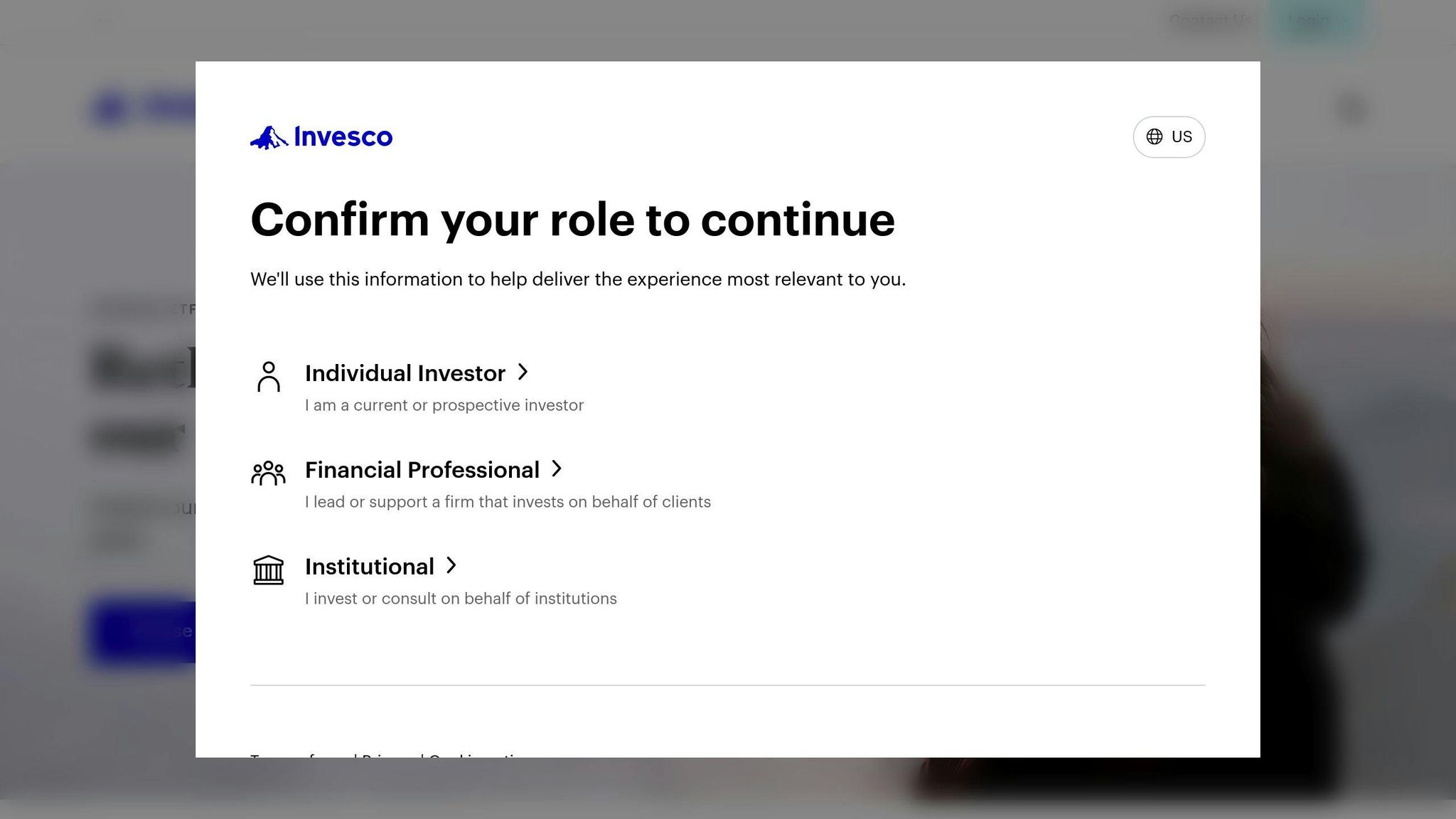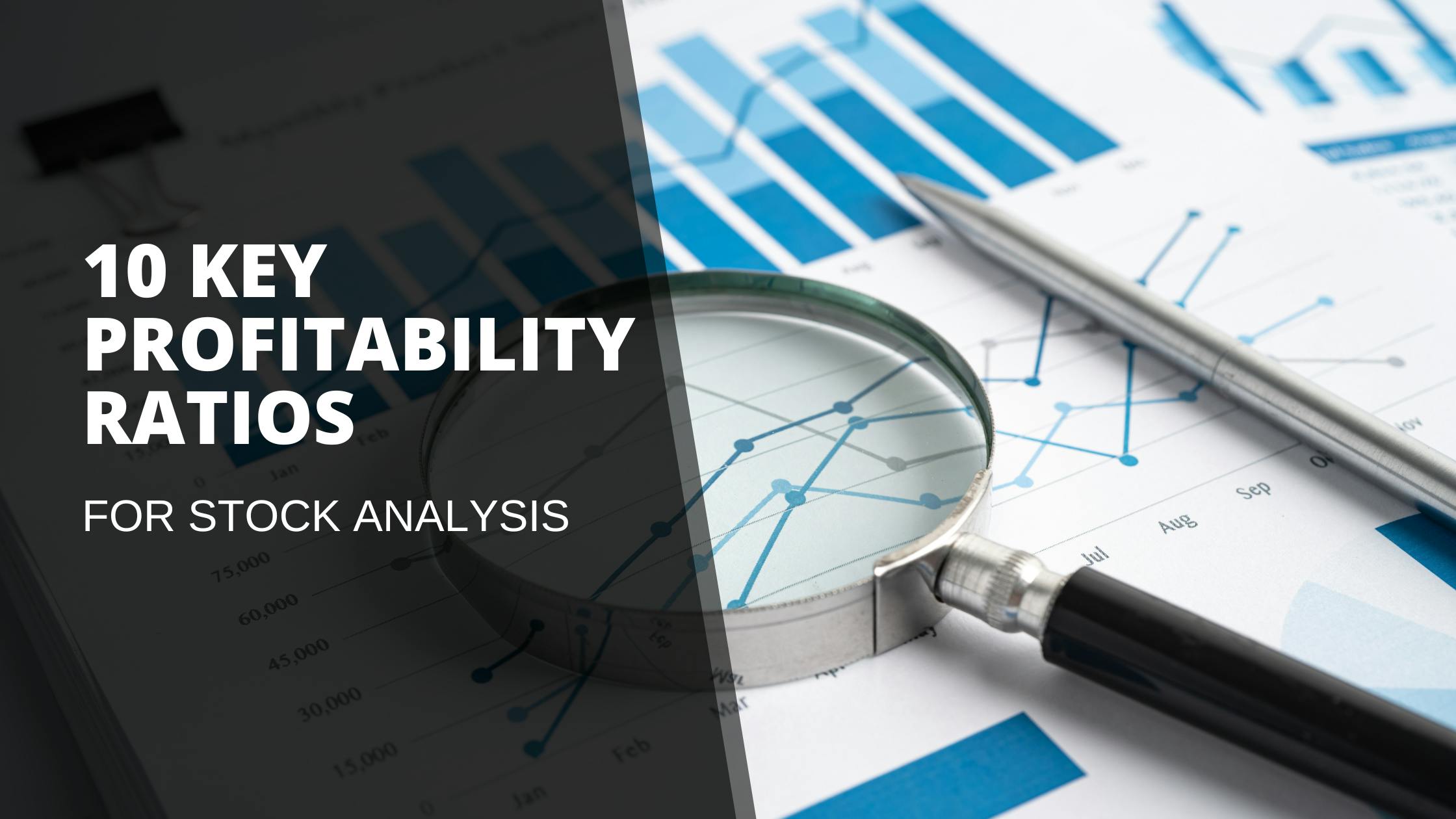Looking to build a solid retirement portfolio? Here's a quick rundown of the top index funds to consider:
- Vanguard S&P 500 ETF (VOO)
- Vanguard Total Stock Market ETF (VTI)
- Schwab U.S. Dividend Equity ETF (SCHD)
- iShares Core S&P Total U.S. Stock Market ETF (ITOT)
- Vanguard Total International Stock Index Fund (VTIAX)
- SPDR S&P Dividend ETF (SDY)
- Invesco NASDAQ 100 ETF (QQQM)
Why index funds for retirement? They're cheap, steady, and easy to manage. Plus, they often outperform actively managed funds over time.
Quick Comparison:
| Fund | Expense Ratio | Focus | Best For |
|---|---|---|---|
| VOO | 0.03% | Large U.S. companies | Core holding |
| VTI | 0.03% | Entire U.S. market | Broad exposure |
| SCHD | 0.06% | Dividend stocks | Income |
| ITOT | 0.03% | Total U.S. market | Low-cost diversification |
| VTIAX | 0.11% | International stocks | Global exposure |
| SDY | 0.35% | Dividend aristocrats | Stable income |
| QQQM | 0.15% | Tech-heavy growth | Aggressive growth |
Remember: Mix these funds based on your age and risk tolerance. Younger? Go heavier on stocks. Closer to retirement? Add more bonds for stability.
Bottom line: Index funds are a smart, low-cost way to invest for retirement. They're not flashy, but they get the job done.
Related video from YouTube
How to pick index funds for retirement
Picking the right index funds for retirement is crucial. Here's what to focus on:
Low fees
Fees can eat away at your returns. Look for funds with tiny expense ratios.
| Fund | Expense Ratio |
|---|---|
| Vanguard Total Stock Market ETF (VTI) | 0.03% |
| Fidelity ZERO Total Market Index Fund (FZROX) | 0.00% |
| BNY Mellon U.S. Large Cap Core Equity ETF (BKLC) | 0.00% |
These rock-bottom fees mean more money stays in your account.
Wide market coverage
Choose funds that own a ton of stocks. It's like spreading your bets.
Total market funds? They own thousands of stocks across all sectors. S&P 500 funds? They track the 500 biggest U.S. companies.
Take VTI. It holds over 3,500 stocks. That's instant diversification.
Past performance
Past results don't predict the future, but they show how well a fund tracks its index.
Here's a shocker: Over 15 years, 88% of U.S. large-cap funds couldn't beat the S&P 500. That's why index funds often win.
Risk and dividends
Mix growth potential with steady income:
Growth funds are riskier but aim for bigger gains. Dividend funds? Less risky, but they pay you regularly.
Consider VDIGX. It focuses on companies that grow their dividends. Its average market cap? A whopping $110.6 billion. That means big, stable companies.
"You get what you don't pay for, and not paying for investments is especially important when returns aren't especially high to begin with." - Jack Bogle, Vanguard Founder
Bogle nails it: When investing for retirement, keep those costs LOW. Focus on these factors, and you'll build a solid index fund portfolio for your golden years.
7 top index funds for retirement
Want to build a strong retirement portfolio? Here are seven index funds that can help:
Vanguard S&P 500 ETF (VOO)
VOO tracks the S&P 500, giving you broad exposure to large U.S. companies.
- Expense ratio: 0.03%
- Recent yield: 1.27%
- 10-year average annual return: 12.71%
Since 2010, VOO has matched the S&P 500 almost perfectly: 13.49% return vs. the index's 13.52%.
Vanguard Total Stock Market ETF (VTI)
VTI covers the entire U.S. stock market, including small and mid-cap stocks.
- Expense ratio: 0.03%
- Holdings: Over 3,500 stocks
Want instant diversification across all U.S. economic sectors? VTI's got you covered.
Schwab U.S. Dividend Equity ETF (SCHD)

SCHD focuses on dividend-paying stocks. Perfect for retirees looking for income.
- Expense ratio: 0.06%
- Recent yield: 3.72%
- 10-year average annual return: 11.52%
It targets companies with a 10+ year dividend history. Top holdings? Pfizer, Chevron, and ExxonMobil.
iShares Core S&P Total U.S. Stock Market ETF (ITOT)
ITOT offers full U.S. stock market coverage at a low cost.
- Expense ratio: 0.03%
Think of it as VTI's cousin, but with a different index provider.
Vanguard Total International Stock Index Fund (VTIAX)
VTIAX gives you exposure to international stocks, balancing out a U.S.-heavy portfolio.
- Expense ratio: 0.11%
It's your ticket to spreading risk beyond U.S. markets.
SPDR S&P Dividend ETF (SDY)
SDY targets "dividend aristocrats" - companies that have raised dividends for 20+ consecutive years.
- Expense ratio: 0.35%
- Recent yield: 2.41%
- 10-year average annual return: 9.85%
With 107 stocks, SDY is built to weather market storms. In 2008, it dropped 23.1% vs. the S&P 500's 37.0% decline.
Invesco NASDAQ 100 ETF (QQQM)

QQQM tracks the NASDAQ 100 index, focusing on major tech companies.
- Expense ratio: 0.15%
It's tech-heavy and growth-oriented, balancing out more conservative holdings.
| Fund | Expense Ratio | Recent Yield | 10-Year Avg. Annual Return |
|---|---|---|---|
| VOO | 0.03% | 1.27% | 12.71% |
| SCHD | 0.06% | 3.72% | 11.52% |
| SDY | 0.35% | 2.41% | 9.85% |
| VTI | 0.03% | Not specified | Not specified |
| ITOT | 0.03% | Not specified | Not specified |
| VTIAX | 0.11% | Not specified | Not specified |
| QQQM | 0.15% | Not specified | Not specified |
These funds offer a mix of growth potential and income, with low fees to boost returns. Combine them to create a retirement portfolio that fits your needs and risk tolerance.
Fund comparison
Let's break down the top index funds for retirement:
| Fund Name | Expense Ratio | Minimum Investment | 5-Year Return |
|---|---|---|---|
| Vanguard S&P 500 ETF (VOO) | 0.03% | $1 | 10.98% |
| Vanguard Total Stock Market ETF (VTI) | 0.03% | $1 | 13.59% |
| Schwab U.S. Dividend Equity ETF (SCHD) | 0.06% | None | Not available |
| iShares Core S&P Total U.S. Stock Market ETF (ITOT) | 0.03% | None | Not available |
| Vanguard Total International Stock Index Fund (VTIAX) | 0.11% | $3,000 | 11.24% |
| SPDR S&P Dividend ETF (SDY) | 0.35% | None | 12.48% |
| Invesco NASDAQ 100 ETF (QQQM) | 0.15% | None | 20% (approx.) |
What does this tell us?
VOO, VTI, and ITOT are the cheapest. You'll pay just $3 per year for every $10,000 invested. That's DIRT CHEAP.
Most funds let you start with next to nothing. But VTIAX? It wants $3,000 upfront. Ouch.
QQQM's return looks amazing. But remember: past performance doesn't guarantee future results. Don't get starry-eyed.
So, what's the play here?
If you're just starting out, VTI might be your best bet. It's cheap, easy to get into, and has performed well.
Want some international flavor? VTIAX could be worth a look, if you can stomach that $3,000 minimum.
For the retirees chasing income, SCHD and SDY are options. But they'll cost you more than the others.
Remember: there's no one-size-fits-all solution. Your choice depends on your goals, risk tolerance, and financial situation.
How to use index funds in retirement plans
Index funds can supercharge your retirement planning. Here's how:
Mix it up
Spread your money across different index funds:
- Large-cap (like Vanguard S&P 500 ETF)
- Small-cap
- International stocks (think Vanguard Total International Stock Index Fund)
- Bonds (Vanguard Total Bond Market ETF)
This mix gives you a taste of different markets and balances your risk.
Stocks vs. Bonds: Finding your sweet spot
Use the "110 minus your age" rule as a starting point:
| Age | Stocks | Bonds |
|---|---|---|
| 30 | 80% | 20% |
| 50 | 60% | 40% |
| 70 | 40% | 60% |
But remember: This isn't set in stone. Adjust based on your gut and goals.
Tweaking your mix
Check your portfolio yearly. If things are off by more than 5%, rebalance.
As retirement looms, play it safer:
| Years to Retirement | What to Do |
|---|---|
| 20+ | Go for growth (more stocks) |
| 10-20 | Balance it out |
| 5-10 | Start upping those bonds |
| 0-5 | Focus on keeping what you've got |
"Keep a year's worth of cash handy to top up your income", says John C. Bogle, the brains behind Vanguard Group.
This cash cushion? It's your safety net when markets go crazy.
sbb-itb-031ede2
Investing at different retirement stages
Your retirement investing strategy should change as you age. Here's how:
Early retirement planning
When you're young, time's on your side. Go for growth-oriented index funds:
- Vanguard Total Stock Market ETF (VTI)
- Invesco NASDAQ 100 ETF (QQQM)
These give you broad market exposure and potential high returns.
"Young investors can afford to take on more risk. An 80% stocks and 20% bonds mix is common for those with a long time horizon", says John C. Bogle, Vanguard Group founder.
Mid-retirement planning
As retirement nears, balance is key. Mix growth and income funds:
| Fund Type | Example | Purpose |
|---|---|---|
| Growth | Vanguard S&P 500 ETF (VOO) | Keep growing |
| Income | Schwab U.S. Dividend Equity ETF (SCHD) | Steady income |
Aim for 60/40 stocks/bonds to manage risk while growing your nest egg.
Late retirement planning
In your final working years and early retirement, focus on preserving capital and generating income:
- SPDR S&P Dividend ETF (SDY)
- Vanguard Total Bond Market ETF (BND)
These offer lower risk and steady income for your retirement lifestyle.
Adjust your strategy based on market conditions and personal needs. One retiree shares:
"So far since 2011 my retirement year, we have done well in the Market with only 2 Down years, 2018 and 2022."
But be ready to adapt. Your priorities shift through retirement:
1. Transition phase: Set up a sustainable withdrawal strategy.
2. Active retirement: Balance spending on adventures with future needs.
3. Slowdown phase: Review your estate and healthcare plans.
4. Stability phase: Update directives to reflect current wishes.
Risks of index fund investing
Index funds are great for retirement, but they're not risk-free. Here's what you need to know:
Market rollercoaster
Index funds follow the market. When it drops, they drop too:
- 2008: S&P 500 index funds plummeted 38% during the financial crisis
- 2013: Bond index funds lost over 2% due to rising interest rates
These swings can hurt your nest egg, especially if you're near retirement.
"An early retirement hit severely reduces your living money", warns Jerry Wagner of Flexible Plan Investments.
To protect yourself:
1. Diversify your index funds
Mix stocks, bonds, and other assets.
2. Add some active management
Balance out the passive approach.
3. Keep cash handy
Have a safety net for short-term needs.
Passive investing pitfalls
Index funds match the market, they don't beat it. This means:
| Drawback | Result |
|---|---|
| Average returns | You won't outperform the market |
| Top-heavy exposure | S&P 500 funds have 18% in just 5 tech giants |
| Inflexibility | Can't avoid overvalued or troubled stocks |
Even the Fed's worried:
"Growing index-inclusion effects may slow the passive investing shift by making active strategies more profitable."
To tackle these issues:
- Don't put all your eggs in the index fund basket
- Add some carefully picked active funds
- Keep an eye on your index fund holdings
Wrap-up
Index funds are a smart choice for building your retirement savings. Here's why:
They're cheap: Index funds cost way less than actively managed ones. This matters. A lot.
"1% more in fees can eat hundreds of thousands from your savings over 40 years." - Jack Bogle, Vanguard Founder
They keep up with the market: Most active funds can't beat the market long-term. Look at these numbers:
| Fund Type | % Falling Behind (10 Years) |
|---|---|
| Large-Cap | 96.45% |
| Mid-Cap | 89.31% |
| Small-Cap | 92.55% |
| International | 87.80% |
They spread your risk: Index funds invest in lots of stocks or bonds.
They're tax-friendly: Less buying and selling means fewer tax headaches.
They're simple: No need to pick stocks or time the market.
Quick tips:
- Mix different index funds to match your risk comfort.
- Younger? You can usually handle more stocks.
- Keep adding money regularly. Small amounts add up.
Index funds aren't perfect, but they're a solid base for most retirement plans. Focus on low costs and stick with it long-term. That's how you set yourself up to win.
Common questions
Here are answers to some key questions about index funds and retirement investing:
Are index funds good for retirement?
Yes. They offer low costs, broad market exposure, and steady returns over time. Perfect for long-term goals like retirement.
How many index funds should I own?
2-4 is usually enough. A typical mix:
- U.S. total stock market fund
- International stock fund
- Bond fund
This gives you wide coverage without overlap.
Index mutual funds vs ETFs: Which is better?
Both work well. Key differences:
| Index Mutual Funds | Index ETFs |
|---|---|
| Daily trading | Trade like stocks |
| Often have minimums | No minimums |
| May have higher fees | Usually lower fees |
ETFs offer more flexibility, but either can work for retirement accounts.
Should I pick funds based on past performance?
Not alone. Past results don't guarantee future gains. Focus on:
- Low fees
- Broad market coverage
- Fit with your overall plan
What if the market drops?
Don't panic. Dips are normal. If you're young, see drops as buying opportunities. Nearing retirement? Shift more to bonds to lower risk.
How much should I put in index funds?
It depends on your age and risk tolerance. A simple rule:
110 minus your age = % in stocks (via index funds). Rest in bonds.
Example: At 30, you'd have 80% in stock funds, 20% in bonds.
Can index funds make me rich?
They can help build wealth over time. But they're not a get-rich-quick scheme. Think steady, long-term growth.
"The best way to measure your investing success is not by whether you're beating the market but by whether you've put in place a financial plan and a behavioral discipline that are likely to get you where you want to go." - Benjamin Graham
Do I need a financial advisor for index funds?
Not always. Index funds are simple to use. But an advisor can help with:
- Overall financial planning
- Tax strategies
- Adjusting your mix as you age
If your situation is complex, professional help might be worth it.
FAQs
What is the best index fund to invest in?
There's no one-size-fits-all "best" index fund. It depends on your goals. But here are some solid options with low fees:
| Fund Name | Minimum Investment | Expense Ratio |
|---|---|---|
| Fidelity Zero Large Cap Index (FNILX) | $0 | 0.0% |
| Fidelity 500 Index Fund (FXAIX) | $0 | 0.015% |
| Schwab S&P 500 Index Fund (SWPPX) | $0 | 0.02% |
| Vanguard 500 Index Fund - Admiral Shares (VFIAX) | $3,000 | 0.04% |
These funds track the S&P 500, giving you broad market exposure. The Fidelity Zero fund? No fees at all. Vanguard's option needs more upfront cash but has a solid track record.
What are the best funds for retired people?
Retirees usually want income and stability. Here are some options to consider:
| Fund Name | Expense Ratio | Focus |
|---|---|---|
| Dodge and Cox Income Fund (DODIX) | 0.41% | Bonds |
| PGIM High Yield Fund (PHYZX) | 0.51% | High-yield bonds |
| T. Rowe Price Dividend Growth Fund (PRDGX) | 0.64% | Dividend stocks |
| Schwab International Index Fund (SWISX) | 0.06% | International stocks |
The Dodge and Cox Income Fund aims for steady returns through bonds. Want growth AND income? Check out the T. Rowe Price Dividend Growth Fund. It focuses on stocks with rising dividends. And for some global flavor at a low cost, there's the Schwab International Index Fund.


